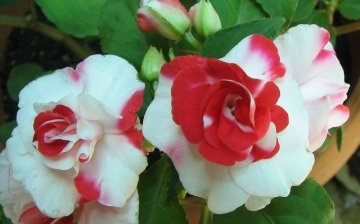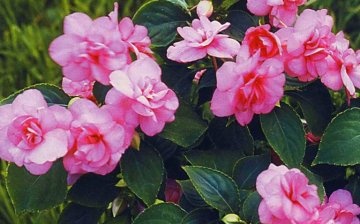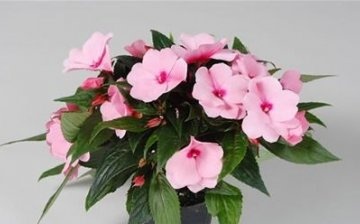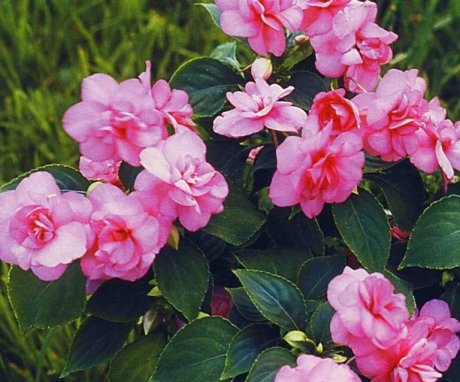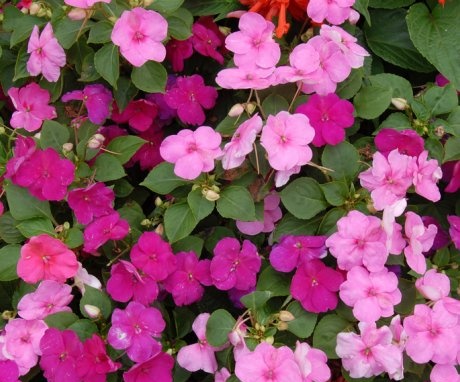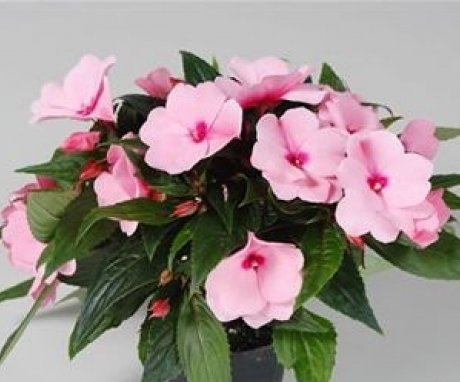Waller's balsam and features of caring for him
Balsam is an interesting plant whose flowers delight the eye with delight. It serves as an excellent home decoration all year round. Imagine the colorful richness of flowers on the hat, which is formed by the leaves. These flowers are grown not only indoors. After the last spring frosts have passed, they can be planted in window boxes, flower beds, hanging baskets or lawns. After planting, waterfalls of flowers and greenery are created, which will look like colorful, bright spots in the open air. With the onset of autumn, flowers should be removed from the soil and stored indoors until the next spring.
Content:
Flower history
Balsam is also called impatiens. There is a wide variety of types of balsam. It grows in many countries with different climates (in Ceylon, India, New Guinea, East Africa and in some regions of Asia) It happens as an annual and perennial, as well as a shrub plant. Balsam is nicknamed touchy because of the way it spreads its seeds. Even with a light touch of a ripe seed box, it bursts, bursts and scatters the seeds.
For cultivation in indoor conditions, specially grown types of balsam are bred. It has been seen in Europe since the end of the 16th century. Instantly became the most common plant for apartments. Received and additional comic names - "Zanzibar flower", "light", "wet Vanka" - for the formation of small droplets on the leaves, which eventually take the form of slightly transparent grains.
Waller's balsam is an extremely attractive plant
The balsam flowers actually look like burning lights on the foliage plan. They have a really rich palette. The range of colors is very wide: from snow-white and yellow-orange to red-purple. They also have different patterns, sometimes in the form of stripes, then with eyes. Their leaf shape is also different. May have the form of a phleboton or an oval with teeth along the edge. The leaves, in turn, are also painted in different colors (bronze brown, variegated, green or red).
The greatest fame, of all indoor and ground varieties of balsam, acquired balsamWaller (or Waller) This is a shrub blooming all year round, with highly branched, not quite transparent shoots that create small bushes up to 25 cm in height. There are also varieties of dwarfs, no more than 15 cm in height. There are so many flowers on Waller's balsam that they practically cover the entire deciduous part of the shrub.
Less popular hybrids are also known. For example, the sun-receptive New Guinea hybrid with large flowers and slightly oblong leaves. Or ampelous balsam growing in Ceylon, with red stems and yellow flowers.
Growing features
Balsam types that absorb sunlight well do not need special care. They feel great in semi-dark places; in rooms where windows face north; in the shade of trees, which can be caught while in the open field. On the warmest sultry days of summer, all types of balsam, excluding the New Guinea hybrid, must be protected from the scorching rays of the sun.
In the summer, balsam must be constantly watered (avoiding stagnation of water) and fed a couple of times a month, changing the mullein infusion with mineral fertilizers. In winter, watering should be reduced to avoid damage to the stem and roots. In winter, it will be an ideal place for them with a temperature of about 15 degrees, with enough light and coolness. Being in places with high temperatures, these plants are susceptible to attacks by aphids and spider mites.
With the onset of spring, balsam is planted in fed soil and pruned, that is, young shoots are allowed to grow. And those parts that were cut off are seated for reproduction.
Balsam is bred using cuttings. The top is cut off with a height of at least 10 cm, placed in water, and sometimes immediately planted in watered ground. After the plant has taken root, it can be planted in a pot. Balsam Waller is also bred with seeds. They must be sown in early spring. The sprouts will appear in 2-3 weeks. With the onset of summer, flowering will begin. In flower shops they sell very beautiful mixtures of different colors of leaves and flowers. This makes it possible to grow large collections of balsam.
Balsam care
- First, pay attention to dried flowers and leaves. They need to be cut off in time.
- Second, do the pinching of the shoots. This will help you create the shape of the plant you want.
- Thirdly, do not forget that these flowers must be transplanted in the spring.
Caring for balsam will take a lot of free time from you, but believe me, you will be encouraged for this by positive emotions and affection of your friends and acquaintances.



